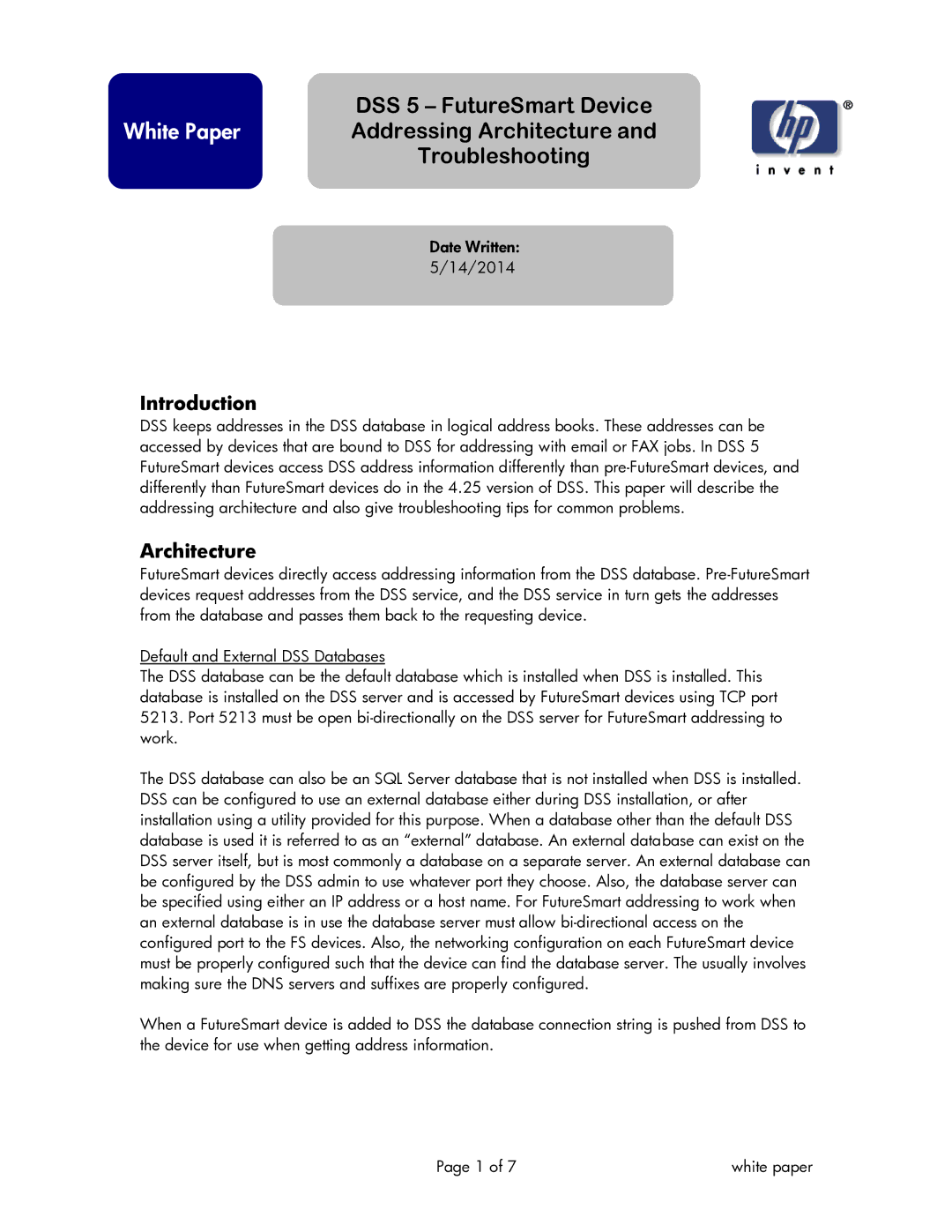
DSS 5 – FutureSmart Device
White PaperAddressing Architecture and
Troubleshooting
Date Written: 5/14/2014
Introduction
DSS keeps addresses in the DSS database in logical address books. These addresses can be accessed by devices that are bound to DSS for addressing with email or FAX jobs. In DSS 5 FutureSmart devices access DSS address information differently than
Architecture
FutureSmart devices directly access addressing information from the DSS database.
Default and External DSS Databases
The DSS database can be the default database which is installed when DSS is installed. This database is installed on the DSS server and is accessed by FutureSmart devices using TCP port 5213. Port 5213 must be open
The DSS database can also be an SQL Server database that is not installed when DSS is installed. DSS can be configured to use an external database either during DSS installation, or after installation using a utility provided for this purpose. When a database other than the default DSS database is used it is referred to as an “external” database. An external database can exist on the DSS server itself, but is most commonly a database on a separate server. An external database can be configured by the DSS admin to use whatever port they choose. Also, the database server can be specified using either an IP address or a host name. For FutureSmart addressing to work when an external database is in use the database server must allow
When a FutureSmart device is added to DSS the database connection string is pushed from DSS to the device for use when getting address information.
Page 1 of 7 | white paper |
